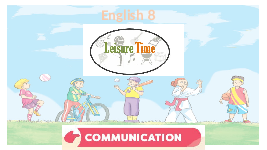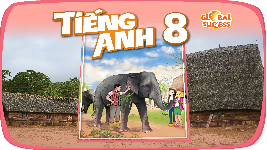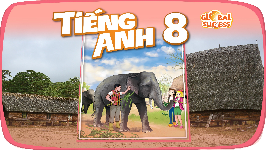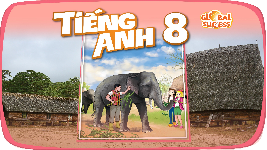



















Preview text:
Uni 6 LIFESTYLES t
LESSON 1: GETTING STARTED Lifestyle differences 1
LESSON 1: GETTING STARTED WARM-UP Asking questions PRESENTATION Vocabulary Task 1: Listen and read.
Task 2: Read the conversation again and complete the table. PRACTICE
Task 3: Complete each sentence with a word or phrase from the box.
Task 4: Label each picture with a word or phrase from the box. FURTHER
Task 5: QUIZZ: Greetings around the world. PRACTICE Wrap-up CONSOLIDATION Homework WARM-UP Answer the questions: 1. What is the video about?
2. In Viet Nam, how to two men greet when they meet?
3. Do people in Thailand shake hands when meeting? LIFESTYLE DIFFERENCES PRESENTATION greet (v) /ɡriːt/ chào hỏi PRESENTATION greeting (n) /ˈɡriːtɪŋ/ lời chào PRESENTATION serve (v) /sɜːv/ phục vụ PRESENTATION common practice (n)
/ˈkɒmən ˈpræktɪs/ thông lệ PRESENTATION in the habit of
/ɪn ðə ˈhæbɪt əv/ có thói quen làm gì PRESENTATION New words Pronunciation Meaning 1. greet (v) /ɡriːt/ chào, chào hỏi 2. greeting (n) /ˈɡriːtɪŋ/ lời chào 3. serve (v) /sɜːv/ phục vụ 4. common practice (n) /ˈkɒmən ˈpræktɪs/ thông lệ 5. in the habit of /ɪn ðə ˈhæbɪt əv/ có thói quen làm gì PRACTICE Listen and read. 1
Nam: Hello, Tom. How’re things?
Tom: Oh good. I like it here. The lifestyle is interesting and different from that in my country. Nam: Really?
Tom: Sure. Students here call their teachers by their title “teacher”, not by their names.
Nam: Right. How do you greet your teachers?
Tom: We usually say “Hello” or “Good morning” then Mr, Mrs, or Miss and their surnames, for example “Good morning, Mr Smith.”
Nam: Are there other differences?
Tom: People buy and sell a lot of street food here. In my country people usually buy food in a store or a restaurant.
Nam: Yeah. Buying street food is a common practice in my city.
Tom: And I’ve noticed that many people have breakfast on the street too! In my country, we typically have a light breakfast at home.
Nam: I see. But here many adults are in the habit of having breakfast outside of their homes. If they’re not in a
hurry, they’ll even have a leisurely coffee there.
Tom: That’s fascinating! PRACTICE
2 Read the conversation again and complete the table. In Nam’s country In Tom’s country
– Students greet teachers by – Students refer to their their title. teachers as Mr, Mrs, or Miss – People eat breakfast and their teachers’ (2) ______________. (1) ___________. on the street surnames
– People buy and sell food on
– People eat breakfast at home. the roadside.
– People often buy food in a (3) __________________. store / restaurant PRACTICE
3 Complete the sentences with the words and phrases from the box. greet practice lifestyle serve in the habit of
1. A balanced diet and exercise are important for a healthy ___________.
2. Handshaking, bowing, and hugging are some of the ways in which people _________ one another.
3. Waiters and waitresses ________ food in restaurants.
4. Going out for breakfast has become a common _________ in this city.
5. My mum is _______________ keeping everything in the kitchen bright and clean. PRACTICE
4 Label each picture with a word or phrase from the box. greeting online learning pizza street food food in restaurant FURTHER PRACTICE
5 Work in pairs. Ask and answer questions in the quiz.
1. Which is probably the most common way of greeting around the world? A. Shaking hands.
B. Sticking out one’s tongue.
2. In the USA, people greet each other by ______. A. shaking heads B. saying “hello” FURTHER PRACTICE
5 Work in pairs. Ask and answer questions in the quiz.
3. Thais greet their elders by saying “sawadee” and ______.
A. saying their surname
B. slightly bowing to them
4. The Maori of New Zealand greet each other by ______.
A. kissing each other’s cheek
B. pressing their noses together FURTHER PRACTICE
5 Work in pairs. Ask and answer questions in the quiz.
5. How do people in Japan normally greet each other?
A. They bow to each other. B. They hug each other. CONSOLIDATION 1 Wrap-up
What have we learnt in this lesson?
identify the topic of the unit
use lexical items related to lifestyle CONSOLIDATION 2 Homework
- Name a list of 10 ways of greetings from different countries.
- Do exercises in the workbook.
- Start preparing for the Project of the unit
Website: hoclieu.vn
Fanpage: facebook.com/www.tienganhglobalsuccess.vn/




